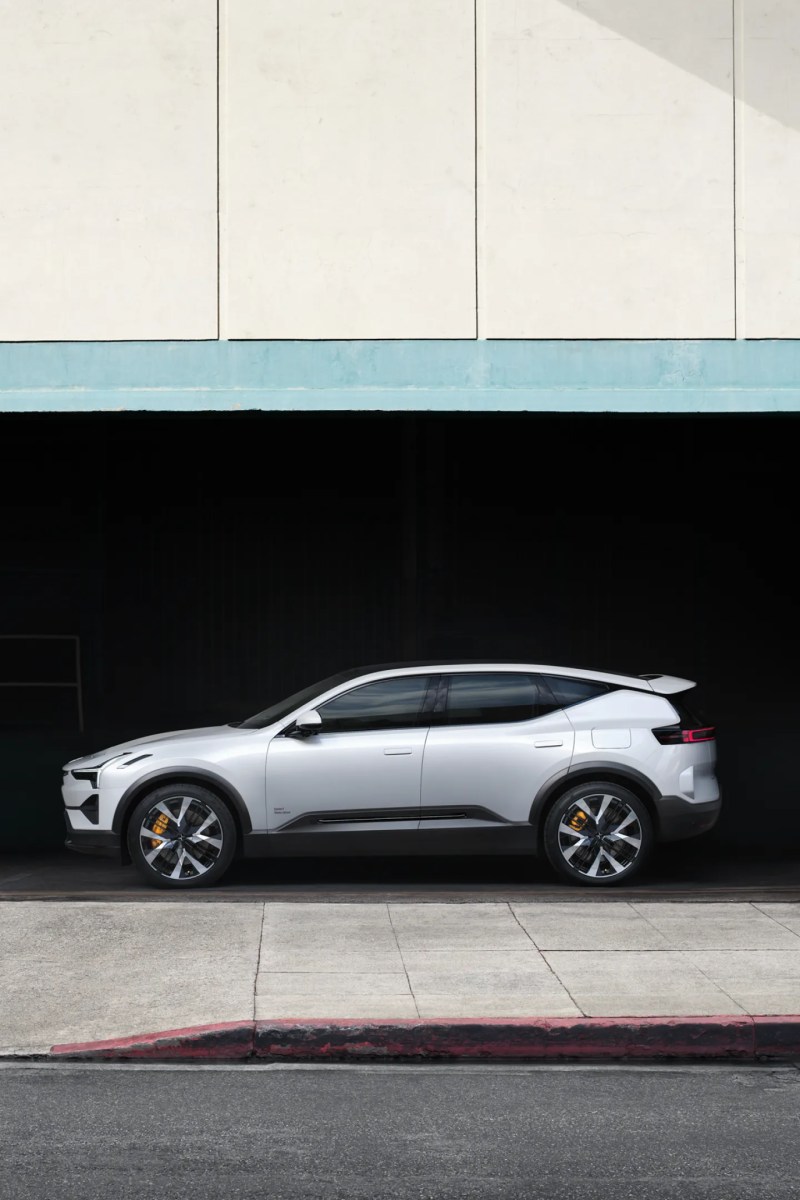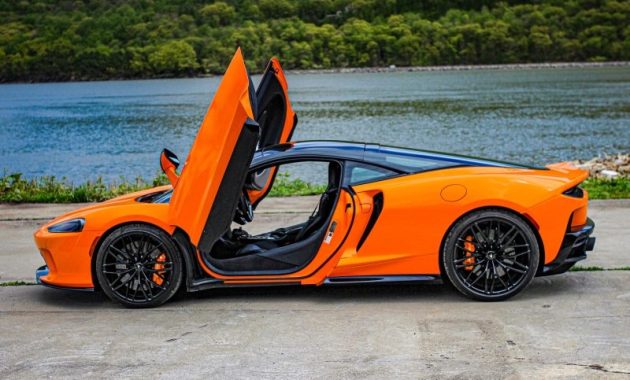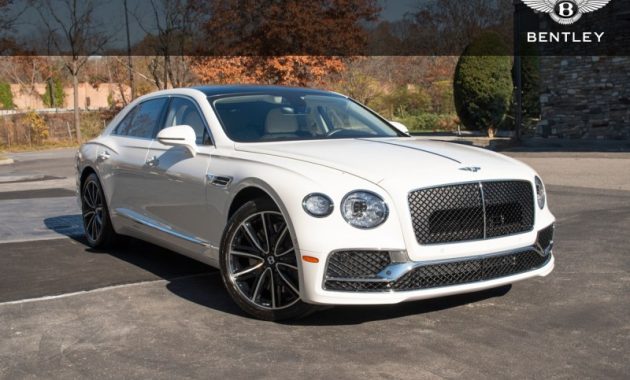Lexus Ls – The Lexus LS (Japanese: レクサス・LS, Hepburn: Rekusasu LS) is a full-size luxury sedan (F-segment in Europe) that serves as the flagship model of Lexus, Toyota’s luxury division. For the first four generations, all LS models had V8 engines and were primarily rear-wheel drive. In the fourth generation, Lexus offered all-wheel drive, hybrid and long-wheelbase variants. The fifth generation changed to use a V6 engine with no V8 option and only one lgth was offered.
As the first model developed by Lexus, the LS 400 debuted in January 1989 and the second generation in November 1994. The LS 430 debuted in January 2000 and the LS 460/LS 460 L series in 2006. Domestic market version. The LS 400 and LS 430, Toyota Celsior (Japanese: トヨタ・セルシオ, Hepburn: Toyota Cerushio), were sold in Japan until the Lexus brand was introduced there in 2006. LS 460 first production automatic eight-speed transmission and automatic parking system. In 2007, V8 hybrid powertrains were introduced on the LS 600h/LS 600h L sedans.
Lexus Ls

Development of the LS began in 1983 as Project F1, the code name for the secret flagship sedan. At the time, Toyota’s two existing flagship models were the Crown and Ctury models – both of which were only catered to the Japanese market and lacked the global appeal to compete with international luxury brands such as Mercedes-Benz, BMW and Jaguar. The upcoming sedan followed an extended five-year design process costing more than US$1 billion and debuted with a new V8 engine and several luxury features. The Lexus LS was assembled from its inception for the export market, and a Lexus division was established to market and service the car internationally. The original LS 400 had strong debut sales and was largely responsible for the successful launch of the Lexus brand.
New 2023 Lexus Ls Hybrid Ls 500h 4 Door Sedan In Tampa #p5002739
Since the start of production, every generation of the Lexus LS has been built in the Japanese city of Tahara, Aichi. The name “LS” stands for “Luxury Sedan”.
In August 1983, Toyota president Eiji Toyoda launched the F1 project (“Flagship” and “No. 1” cars; alternatively called the “Circle-F” project), as a secret effort aimed at producing a world-class luxury sedan on an international scale. . market
The F1 development effort had no specific budget or time constraints, and as a result the car did not use existing Toyota platforms or parts.
Instead, chief engineer Ichiro Suzuki attempted to develop a new design, aimed at outdoing American and European flagship sedan rivals in specific targeted areas, including aerodynamics, cabin quietness, overall speed and fuel efficiency.
Lexus Ls 460 Specs, Trims & Colors
During development, 60 designers and 1,400 engineers, 2,300 technicians and more than 200 support workers in 24 teams.
The teams recorded 2.7 million kilometers (1.7 million miles) of tests on locations ranging from the winter roads of Europe to the deserts of Arizona, Australia or Saudi Arabia, to American highways and deserts.
In May 1985, designers began work on the F1 project. At the end of 1985, designers borrowed the first exterior study model from F1 management, with a sports car design with a low hood and a narrow front profile.

By 1986, the sedan used a three-box design with an upright stance, a bolder grille, and a two-tone body.
New 2024 Lexus Ls 500 4dr Car In Mt. Laurel #n51154
Extensive modeling and wind tunnel testing resulted in a low drag coefficient (Cd 0.29) for conventional production cars at the time.
For the passenger cabin, material selection testing over two years evaluated 24 different types of wood and several types of leather before deciding on specific trim combinations.
And with over US$1 billion in development costs, the final design for production of the Lexus LS 400 (chassis code UCF10) was frozen in May 1987, and design patents were filed on 20 February 1987 and 13 May 1987.
In January 1989, the LS 400 debuted as a 1990 model at the North American International Auto Show in Detroit, Michigan.
Lexus Ls 500h Awd: Lexus’s Full Size Flagship Proves Frugality Need Not Be Painful
Production began on May 15, 1989, and the first ships left Japanese ports in late June 1989. The first vehicles became available in August 1989 and US sales officially began on September 1, 1989, followed by limited exports to Australia, Canada and these countries. United States of America. The state started in 1990.
Sales began in some smaller markets in late 1991, nearly three years after the car’s introduction, as Lexus focused on the North American and domestic markets. Production was limited to approximately 50,000 cars per year to maintain the desired quality standards; Of these there are 40,000 examples for the United States, 8,000 for Japan, and only 2,000 for the rest of the world.
The LS 400’s new 4.0-liter 1UZ-FE 32-valve V8 engine, capable of 245 PS (180 kW; 242 hp) and 350 N⋅m (258 lb⋅ft) of torque,

The ECT-i is mated to a new four-speed automatic transmission with electronically controlled shift, super-flow torque converter and rear differential.
Lexus Ls 500 Inspiration Series Rocks The Wildest Interior Trim In The Industry
The LS 400 had a 0-100 km/h (62 mph) time of 8.5 seconds and a top speed of 250 km/h (155 mph).
Compared to its rivals the BMW 735i (E32) and the Mercedes-Benz 420 SE (W126), the LS 400 had a quieter cabin of 58 dB at 100 km/h (62 mph); high speed; Low drag coefficient and curb weight; And avoided the US Guzzler Gas Tax.
In European tests, noise levels at 200 km/h (124 mph) were measured at 74 dBA, with the BMW 735i at 150 km/h (93 mph).
The LS 400 was one of the first luxury sedans to feature SRS airbags, power-adjustable shoulder seat belts and an automatic telescoping steering wheel with electrochromic rearview mirrors.
Used 2005 Lexus Ls 430 For Sale (sold)
The five-passenger cabin features California walnut and leather trim, power-adjustable seats and soft controls. An illuminated electro-luminescent gauge cluster had a holographic visual effect, with indicator lights projected onto the instrument panel.
The memory system stores the position of the driver’s seat, side mirrors, steering wheel and seat belt. Available luxury options include a premium Nakamichi sound system and a built-in cell phone with hands-free capability.
In Japan, the Lexus launch was complicated by the existing four domestic Toyota dealer networks at the time of its introduction.

And shortly after the LS 400 debuted in the United States, a right-hand drive version bearing the Toyota Celsior-badge was introduced on October 9, 1989, and was only available at local Toyota stores.
Lexus Ls Facelift Revealed, Australian Timing Confirmed
Models came in either the basic “A,” a “B” model with uprated suspension, or a fully equipped “C” spec trim.
The Crown and Crown Majesta, which later appeared in 1991, were only available in Toyota stores that carried Japan-only luxury Toyota models such as the Ctury.
Ownership costs for Japanese drivers were high and expensive due to Japanese government mitigation regulations and annual road tax obligations. Owning a Celsior is also considered unreasonable in Japan due to the fact that two-way city streets are usually zoned for speeds of 40 km/h (25 mph) or less.
Celcior introduces two world firsts: high-performance twin-tube shock absorbers and an air suspension combined with an upgraded version of Toyota’s semi-active Toyota Electronically Modulated Suspension, called Piezo TEMS.
New 2023 Lexus Ls Ls 500 Sedan In Miami #l95509
It was ahead of its time: Mercedes-BZ first introduced electronically controlled air suspension on the 1999 Mercedes-BZ S-Class (W220) (Airmatic).
As the flagship luxury sedan in the full-size segment, the relatively low starting MSRP was actually targeted at $25,000 during the first phase of development. However, the depreciation of Y against the dollar has increased by $35,000. Success in sales. Part of the concern was the fact that the Lexus nameplate lacked the heritage and brand identity of German rivals such as Mercedes-Benz. Similarly, luxury cars compete in the segment with the BMW 7-Series and Mercedes S-Class averaging slightly less than $25,000. However, once the LS400 was released, sales figures were very positive, as the car was almost praised for its standard and specification level.
Lexus parts company Toyota has already established a good reputation for reliability and quality in economy cars. The Cressida sedan gave the American market some evidence that Toyota could produce a capable, large luxury flagship with comparable reliability.

In December 1989, shortly after the launch of the LS 400, Lexus ordered a voluntary recall of 8,000 vehicles sold so far, based on two customer complaints about faulty wiring and an overheated brake light. All vehicles were serviced within 20 days and the incident helped establish Lexus’ customer service reputation.
Lexus Ls 500 Review
In 1990, US sales of the LS 400 surpassed those of rival Mercedes-Benz, BMW and Jaguar models.
The LS 400 made Consumer Reports’ 2007 list of recommended vehicles driven 320,000 km (200,000 mi) or more regularly, with proper maintenance.
Debuting in September 1992 as a 1993 model, the refreshed LS 400 (made through 1991) was introduced with more than 50 changes, largely in response to customer and dealer requests.
The vehicle received larger disc brakes, wheels and tires, and adjustments were made to the suspension and steering system to improve handling.
Pre Owned 2022 Lexus Ls Ls 500 Sedan In Murrieta #x9886
Stylistical changes include additional body side moldings and a revised grille, as well as a greater choice of colors.
For the interior, a standard front passenger airbag (do
2022 lexus ls, lexus ls cost, buy lexus ls 500, 2021 lexus ls, certified lexus ls, lexus ls 500 msrp, 2023 lexus ls, lexus ls 500h, new lexus ls 500, new lexus ls, lexus ls f sport, lexus ls hybrid
- Toyota Land Cruiser 2025: Anticipated Features, Tech Integration, Sustainability, Performance - December 21, 2024
- Mercedes-Benz GLE 450e 2025: A Glimpse into the Future of Hybrid SUVs - December 20, 2024
- Lamborghini Ultima Veloce 2025 - August 15, 2024













